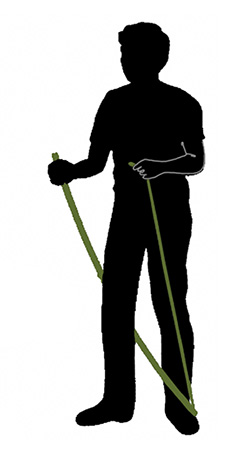A step-by-step guide to creating a bow and arrow in the wilderness using simple materials and techniques.
If you're stranded in the woods and need to hunt for food, knowing how to make a bow and arrow can be a lifesaver. While a firearm like a simple .22-caliber rifle may provide better accuracy at a distance, a homemade bow and arrow can be effective within 10-50 feet. However, always rely on multiple survival strategies, including bow hunting, snares, and scavenging.
The Bow
Wood Selection
Choose woods like yew, willow, cedar, locust, ash, hickory, elm, maple, or birch for your bow. Avoid pine or dead branches. Greener saplings or shoots work best. Always cut 2-3 potential shafts while selecting.
Bow Size
Cut branches measuring 50-60 inches in length, roughly the distance from the ground to your neck. Ensure the branch is at least 1 inch in diameter at the center and 3/4 inch at the edges.
Discover edible flowers for survival.
Cutting the Bow
Use a saw or knife to carefully cut the branch. Avoid bending or breaking it off to maintain the wood's integrity. Choose branches with minimal knots or side branches.
Making the Handle
Plan for two key handle sections: the hand grip and the arrow rest. Wrap the hand grip with leather, duct tape, or cloth for comfort. Create a slight notch above the grip for the arrow to rest.
Placing the String
Cut v-shaped notches at both ends of the bow with the smaller end of the "V" facing inward. Reinforce the ends with duct tape if needed. Use nylon twine, string, leather strips, or shoelaces for the bowstring. Ensure it is 12 inches longer than the bow.
Learn about rope making here.The Arrows
Wood Choice
Select straight saplings or shoots without branches or knots for your arrows.
Length and Size
Ideal arrows measure 24-30 inches long and 1/4 to 1/2 inches in diameter. Shorter arrows tend to remain straighter, fly better, and are less prone to breaking.
Preparing the Arrow
Remove the bark carefully to preserve the branch's integrity. If possible, cure the arrows for 1-10 days to prevent warping. Cut a notch at the back of the arrow for the bowstring and secure it with string. Sharpen the tip and harden it by charring over coals.
Practice
Test your bow and arrows by shooting at soft targets like piles of leaves or moss. This will help you determine which arrows fly straight and are most effective.
Have You Made a Bow?
Share your tips and tricks in the comments! We'd love to hear about your experiences and advice on bow-making.
You might also be interested in:












